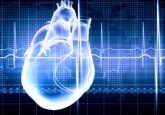Key to heart recovery revealed

New cell population found to be a key factor in the heart recovery process.
Recent research from the University of Calgary (AB, Canada), published in Immunity, has discovered a previously unidentified cell population in the pericardial fluid surrounding the heart. This highlights the potential for the development of new therapies to treat patients with heart disease.
The heart does not heal as readily as other organs in the body, which is a large contributing factor to heart disease being the most prevalent cause of death in the world. As such, the cells surrounding the heart were previously not thought to be involved in the healing process.
First author, Justin Deniset, and the University of Calgary team realized that previous research into the pericardial sac surrounding the heart had overlooked the importance of its role in cardiac regeneration. This is due to established coronary ligation methods that had caused disruption to, or completely removed the pericardium of rodents during surgery to reach the heart.
“The possibilities for further discovery and innovative new therapies are exciting and important.”
To overcome this issue, Deniset developed a novel technique to cause myocardial infarctions (MI) in rodents while preserving the pericardium and its contents. This technique still enabled the team to generate comparable infarct sizes post-MI with methods that disrupted the pericardium.
The team then investigated the immune cells in the pericardium. Using flow cytometry, they discovered that the major component of the pericardium in mice is GATA6-expressing macrophages. These cells have since been implicated in the healing process; mice whose pericardial sac were removed showed significantly less healing a month after a heart event, when compared with a heart with the pericardial sac intact.
-
Regenerating the heart
-
Cardiac tissue cultures – out now in 3D!
-
Catching z’s to prevent heart disease
After experimental MI, the GATA6-expressing macrophages migrated to the pericardium and continued to perform antifibrotic functions in mice with the pericardial sac intact. Whereas, mice lacking the pericardial sac displayed increased scarring through enhanced interstitial fibrosis, highlighting their importance in heart healing.
The discovery of these healing cells has the potential to bring about the, “…repair and regeneration of new heart muscle. The possibilities for further discovery and innovative new therapies are exciting and important,” commented Paul Fedak a professor in the Department of Cardiac Sciences.
